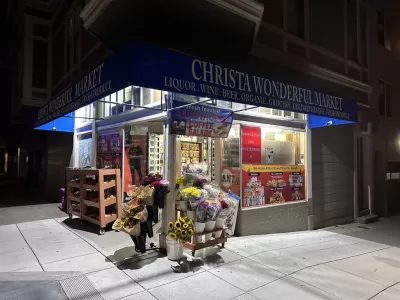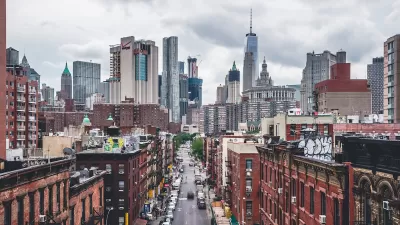In a wide ranging personal journey of interest to planners and interpreters of the built and natural landscapes, Chuck Wolfe weaves the interplay of the forces behind the everyday, providing fodder for problem solving in our cities and towns.

In 14 essays (the most recent on a West Coast road trip), Chuck Wolfe explores change in built and natural landscapes, the role of memory, inspiration, and urban regeneration.
The illustrated series, often using black and white photography, examines the role of placemaking, development forms and styles, histories, the role of the automobile, changing values, as summarized here:
Illustrating the transformation of spaces influenced by nature, culture, technology, and the beauty in decay, survival, and rebirth. Valuing natural resilience, historical heritage, and human adaptability across cycles of change and growth that shape our shared environments.
FULL STORY: Resurgence: A Journey

Trump Administration Could Effectively End Housing Voucher Program
Federal officials are eyeing major cuts to the Section 8 program that helps millions of low-income households pay rent.

Planetizen Federal Action Tracker
A weekly monitor of how Trump’s orders and actions are impacting planners and planning in America.

Ken Jennings Launches Transit Web Series
The Jeopardy champ wants you to ride public transit.

Crime Continues to Drop on Philly, San Francisco Transit Systems
SEPTA and BART both saw significant declines in violent crime in the first quarter of 2025.

How South LA Green Spaces Power Community Health and Hope
Green spaces like South L.A. Wetlands Park are helping South Los Angeles residents promote healthy lifestyles, build community, and advocate for improvements that reflect local needs in historically underserved neighborhoods.

Sacramento Plans ‘Quick-Build’ Road Safety Projects
The city wants to accelerate small-scale safety improvements that use low-cost equipment to make an impact at dangerous intersections.
Urban Design for Planners 1: Software Tools
This six-course series explores essential urban design concepts using open source software and equips planners with the tools they need to participate fully in the urban design process.
Planning for Universal Design
Learn the tools for implementing Universal Design in planning regulations.
Heyer Gruel & Associates PA
Ada County Highway District
Institute for Housing and Urban Development Studies (IHS)
City of Grandview
Harvard GSD Executive Education
Toledo-Lucas County Plan Commissions
Salt Lake City
NYU Wagner Graduate School of Public Service





























